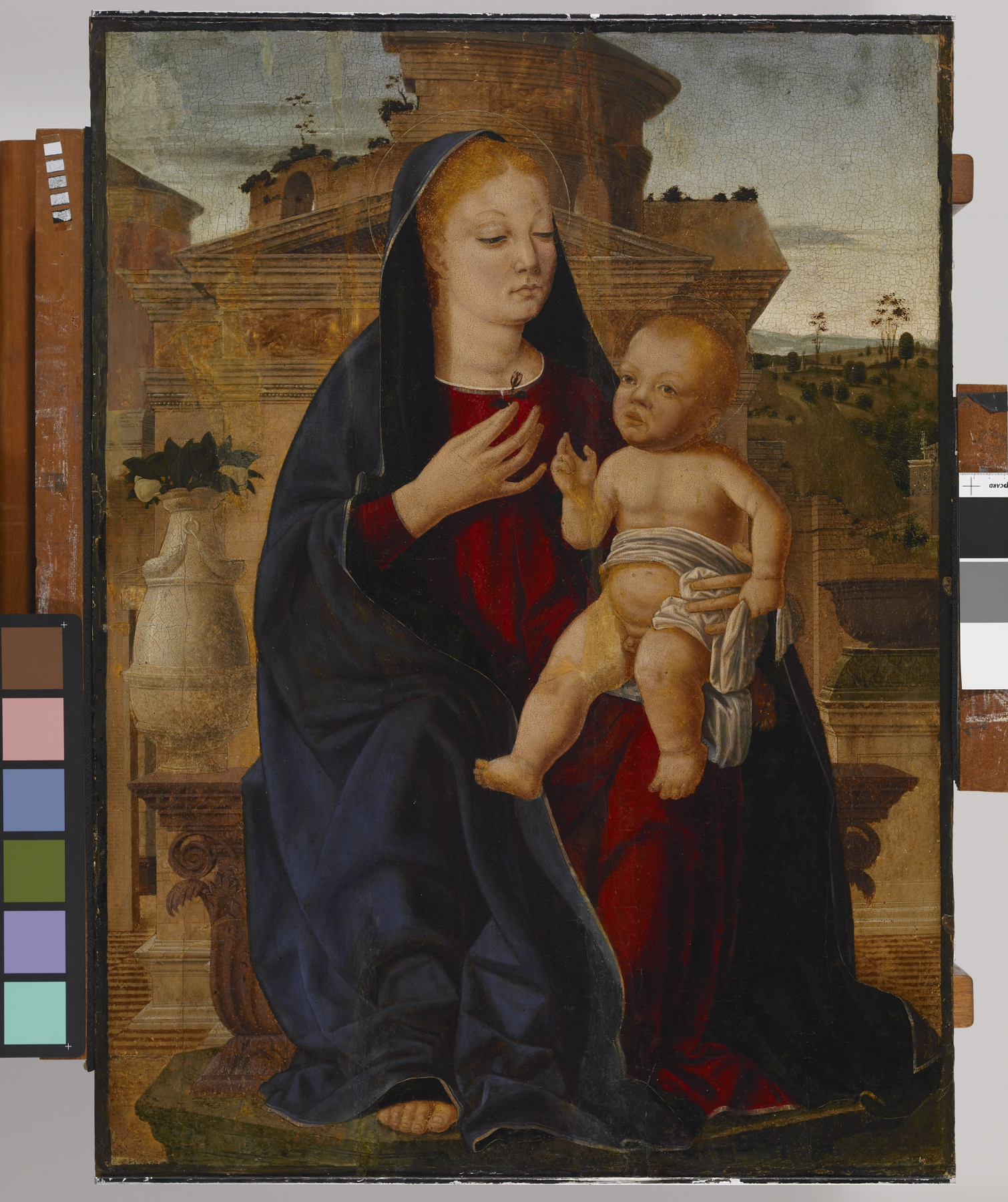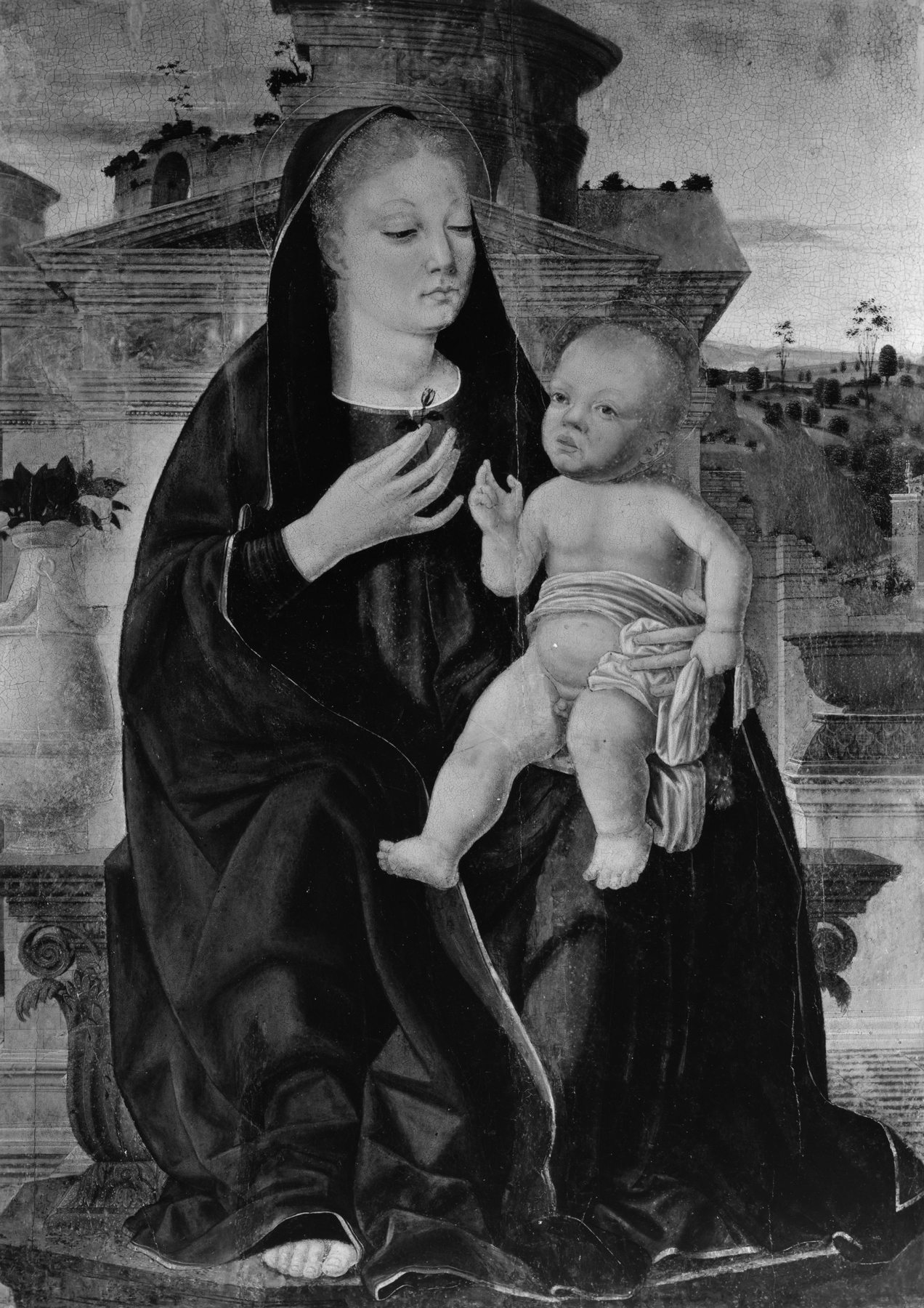Virgin and Child
(Renaissance Europe )
The Virgin and Child sit on a bench of richly carved porphyry, a semi-precious stone mined in Egypt and traditionally associated with the Roman emperors and then with Christ as "lord of creation." Behind are the ruins of a domed building resembling the Pantheon, the famous temple in Rome built in the 1st century CE and dedicated to all the pagan gods which was later repurposed as a Christian church. By depicting the building in ruins, the artist is alluding to the idea that the birth of Christ ushered in a new Christian era to replace the crumbling pagan past. The rose petal in the Virgin’s hand is a symbol of her purity, while the vase of pears on the bench alludes to Christ’s endless love for humanity.
The sculptural forms, meticulous attention to detail, and precise use of linear perspective (note the checkered pavement in the background) indicates the Walters painting is by an artist of considerable skill; his identity, however, is still up for debate. The painting has been associated with the painter-architect Bramantino (ca. 1465-1530), active primarily in Milan, as well as number of artists active throughout the neighboring region of Emilia-Romagna, such as Leonardo Scaletti (ca. 1435-95). In addition, the composition is close to a painting at Bucknell University (Lewisburg, Pennsylvania) by an associate of Francesco del Cossa (ca. 1436-1477), one of the leading painters in the north Italian city of Ferrara, and to a panel at the Gemäldegalerie in Berlin by Pedro Berruguete (ca. 1445/50-1503), a Spanish artist who spent several years at the court of Urbino in central Italy. The Walters painting and its variants probably derive from the same prototype, which must have been an important or publicly-displayed image in one of these central or north Italian cities during the last quarter of the 15th century.
Provenance
Provenance (from the French provenir, 'to come from/forth') is the chronology of the ownership, custody, or location of a historical object. Learn more about provenance at the Walters.
Bernard Berenson [date and mode of acquisition unknown]; Henry Walters, Baltimore, 1911 [mode of acquisition unknown] [through Berenson]; Walters Art Museum, 1931, by bequest.
Geographies
Italy, Lombardy
(Place of Origin)
Italy, Ferrara (Place of Origin)
Measurements
Painted surface H: 29 15/16 x W: 22 3/16 x D: 5/16 in. (76 x 56.4 x 0.8 cm)
Credit Line
Acquired by Henry Walters, 1911
Location in Museum
Not on view
Accession Number
In libraries, galleries, museums, and archives, an accession number is a unique identifier assigned to each object in the collection.
In libraries, galleries, museums, and archives, an accession number is a unique identifier assigned to each object in the collection.
37.500




